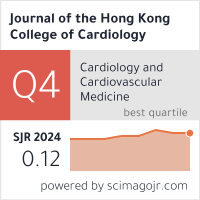Abstract
During 11 years period submaximal exercise testing within 3 weeks of acute myocardial infarction was performed with 894 patients. Exercise induced ST segment depression appears to have prognostic significance of subsequent development of fatal coronary events at 6, 12, 24 months and 11 years post infarction. At follow-up at 2 years post infarction in the non survivors group there were only 45.2% exercise induced ST segment depression. This shows, that prognostic importance of ST depression is insufficient and demands of research of more consistent signs. The cardiovascular response to exercise was interpreted as transiting process of the self-regulation of cardiovascular system, and the new predictive signs were found on the basis of heart rate and systolic blood pressure curves during the exercise and after it. The prognostic value of these signs were established. The combined use both the new predictive signs and the usual data of early exercise test shows the high predictive possibility of test – the early cardiac death was predicted in 80% of cases. The patients after myocardial infarction can be divided into relative high and low-risk groups for subsequent cardiac events if all information available on the exercise test is used.
Recommended Citation
Gabija Pundzi t, Kamil Laimut Bloznelien, Remigijus ali nas, Julija Bra d ionyt, Dynamic Characteristics of Heart Rate and Systolic Blood Pressure at Early Exercise Test after Myocardial Infarction in Predicting the Life Expectancy Journal of the Hong Kong College of Cardiology 2004;12(3) https://doi.org/10.55503/2790-6744.1109
Creative Commons License

This work is licensed under a Creative Commons Attribution-Noncommercial-No Derivative Works 4.0 License.



